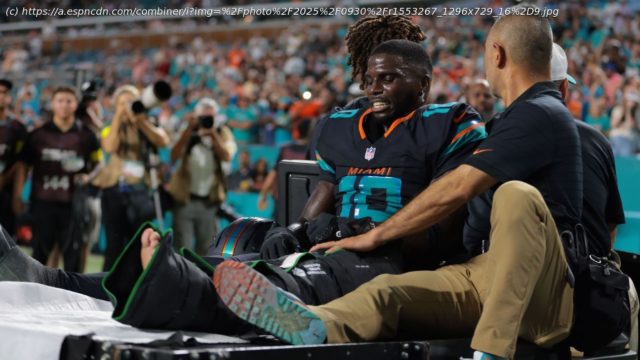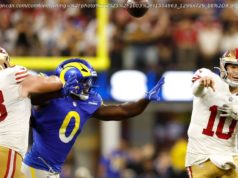What is the Dolphins WR’s outlook for a dislocated knee, the on-field impact of his absence and his future in Miami.
— Miami Dolphins wide receiver Tyreek Hill likely will miss at least the remainder of the 2025 regular season after suffering a dislocated left knee in Monday night’s 27-21 win over the New York Jets.
It’s a massive blow to a Dolphins team that picked up its first win of the season but now must claw back from a 1-3 record without a player who’s been the NFL’s preeminent home run threat for the past decade.
«Next man up», running back De’Von Achane said of losing Hill after Monday’s game. «We’ve just got to make sure we stay ahead of the sticks. I feel like anybody on this team when they got the ball in their hands, they can make plays. We just got to practice and just got to face the fact that we might not have him.»
This is unfamiliar territory for a Dolphins team that has only played one game without Hill, around whom coach Mike McDaniel’s offense is built, since 2022, but spent most of the offseason and training camp without him as he rehabbed from multiple injuries.
So, what does his latest injury mean for Hill’s season and his time in Miami? And how will it impact the Dolphins, including quarterback Tua Tagovailoa? Dolphins reporter Marcel Louis-Jacques and ESPN senior writer and injury analyst Stephania Bell answer the biggest questions.
All we can say at this point is that Hill’s current season is over. The timetable for recovery is dependent on which structures are specifically involved and the extent of surgical repair.
The term «knee dislocation» simply describes the base result of the injury: The knee has been forced into a position that exceeds its normal range of motion and the bones are no longer in their proper alignment. Dislocations can happen in different directions and the extent of injury can vary depending on the forces through the joint at the time of injury.
With a knee dislocation, there is typically trauma to some of the main stabilizing ligaments (exs: ACL, PCL, MCL, LCL). Other associated tissues in the area can be injured (such as meniscus, bone, cartilage) but there are two particular structures of critical importance: the peroneal nerve and the popliteal artery.
The peroneal nerve travels from the back of the knee towards the outer aspect of the knee before it dives deeper into the muscles of the lower leg. It is responsible for both sensation and muscular control in the lower leg. If damaged during a traumatic injury such as a knee dislocation, it can lead to loss of motor control at the foot and ankle as well as regional sensory loss in the area.






